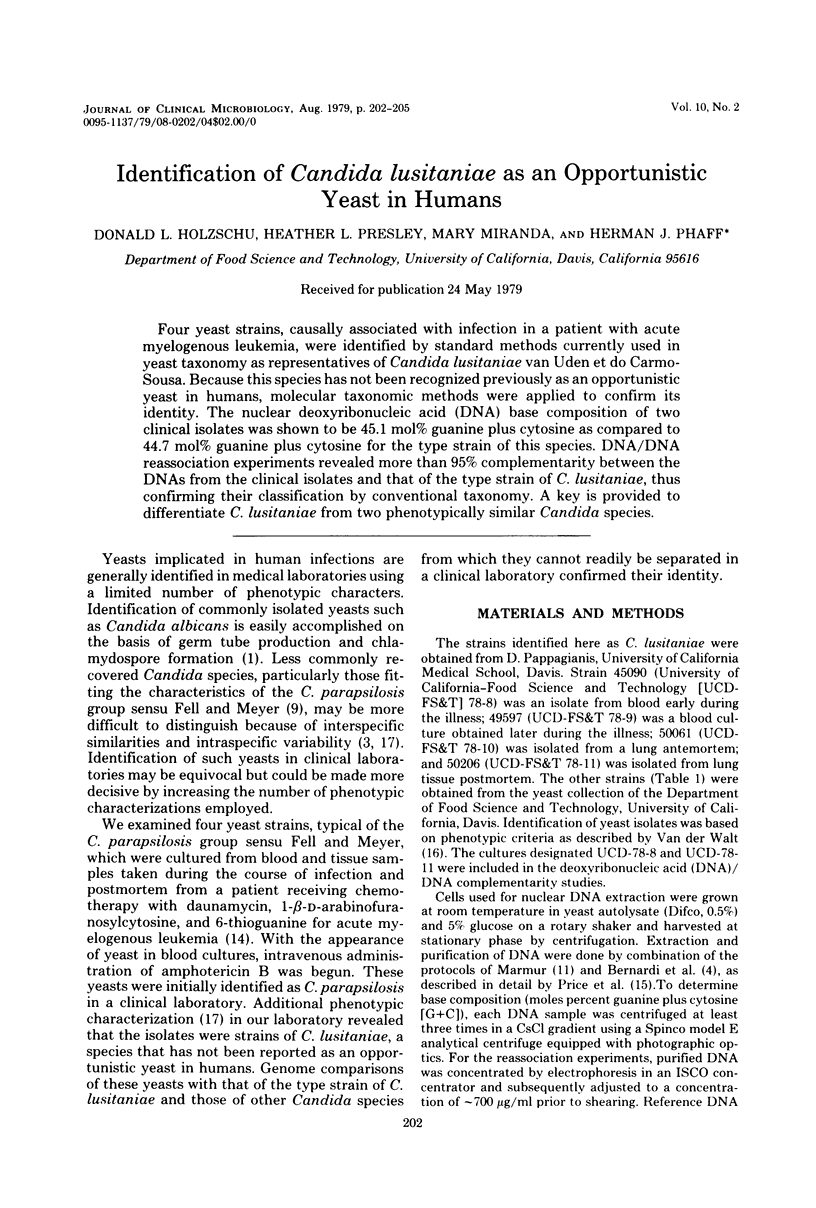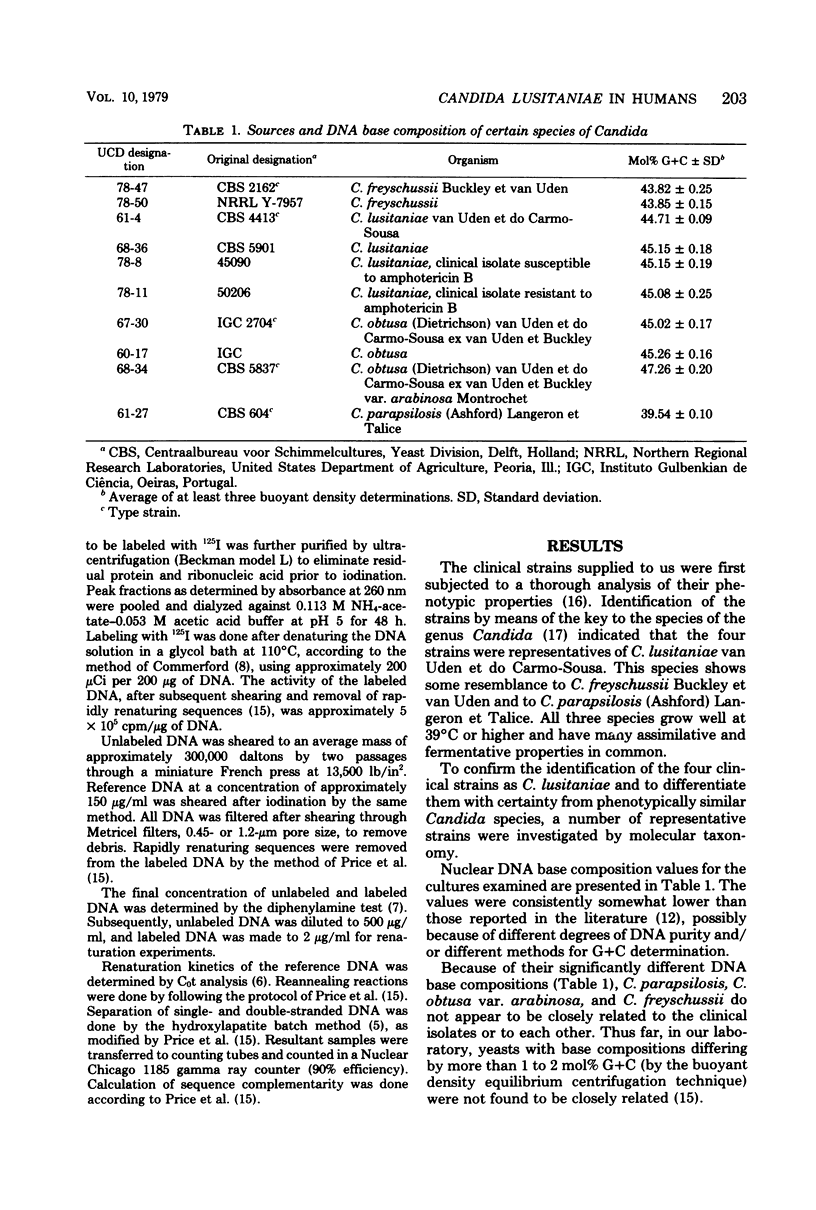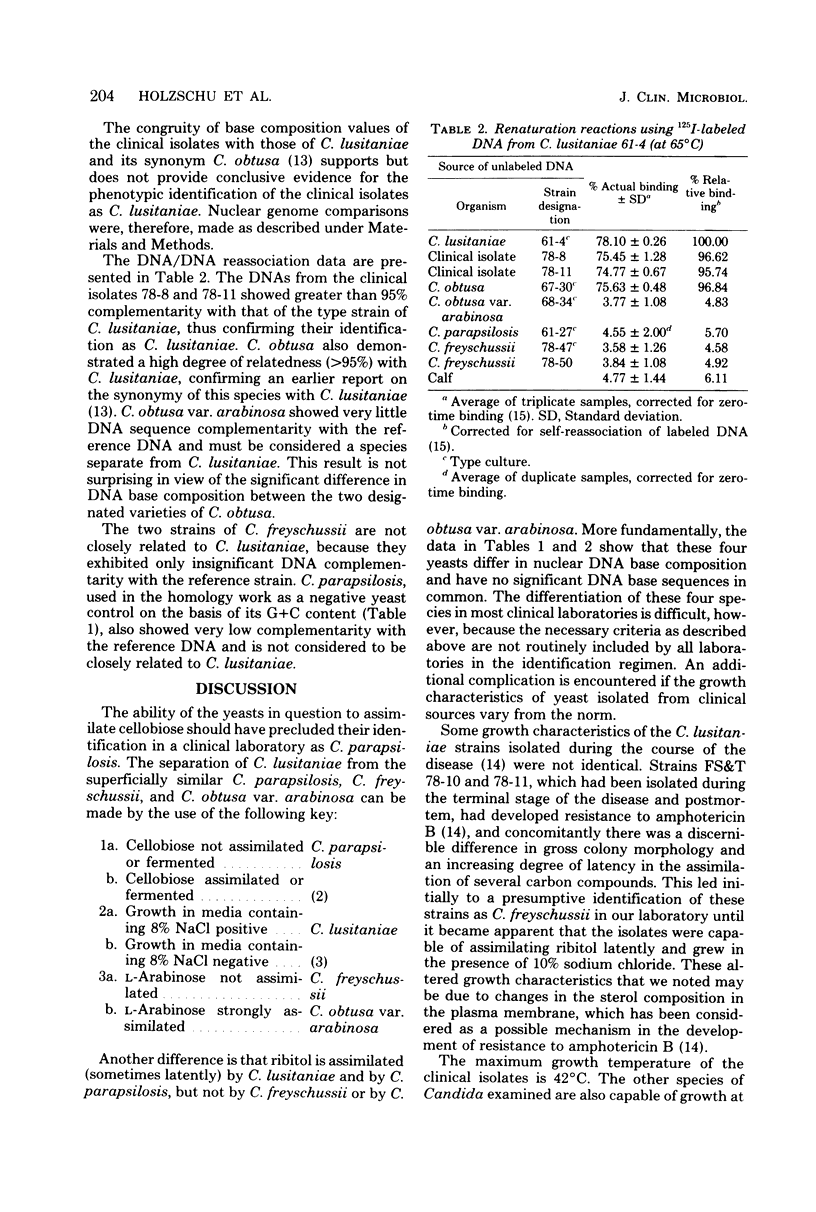Abstract
Four yeast strains, causally associated with infection in a patient with acute myelogenous leukemia, were identified by standard methods currently used in yeast taxonomy as representatives of Candida lusitania van Uden et do Carmo-Sousa. Because this species has not been recognized previously as an opportunistic yeast in humans, molecular taxonomic methods were applied to confirm its identity. The nuclear deoxyribonucleic acid (DNA) base composition of two clinical isolates was shown to be 45.1 mol% guanine plus cytosine as compared to 44.7 mol% guanine plus cytosine for the type strain of this species. DNA/DNA reassociation experiments revealed more than 95% complementarity between the DNAs from the clinical isolates and that of the type strain of C. lusitaniae, thus confirming their classification by conventional taxonomy. A key is provided to differentiate C. lusitaniae from two phenotypically similar Candida species.
Full text
PDF



Selected References
These references are in PubMed. This may not be the complete list of references from this article.
- Ahearn D. G. Medically important yeasts. Annu Rev Microbiol. 1978;32:59–68. doi: 10.1146/annurev.mi.32.100178.000423. [DOI] [PubMed] [Google Scholar]
- Ahearn D. G., Meyer S. A., Mitchell G., Nicholson M. A., Ibrahim A. I. Sucrose-negative variants of Candida tropicalis. J Clin Microbiol. 1977 Apr;5(4):494–496. doi: 10.1128/jcm.5.4.494-496.1977. [DOI] [PMC free article] [PubMed] [Google Scholar]
- BURTON K. A study of the conditions and mechanism of the diphenylamine reaction for the colorimetric estimation of deoxyribonucleic acid. Biochem J. 1956 Feb;62(2):315–323. doi: 10.1042/bj0620315. [DOI] [PMC free article] [PubMed] [Google Scholar]
- Bernardi G., Faures M., Piperno G., Slonimski P. P. Mitochondrial DNA's from respiratory-sufficient and cytoplasmic respiratory-deficient mutant yeast. J Mol Biol. 1970 Feb 28;48(1):23–42. doi: 10.1016/0022-2836(70)90216-0. [DOI] [PubMed] [Google Scholar]
- Brenner D. J., Fanning G. R., Rake A. V., Johnson K. E. Batch procedure for thermal elution of DNA from hydroxyapatite. Anal Biochem. 1969 Apr 4;28(1):447–459. doi: 10.1016/0003-2697(69)90199-7. [DOI] [PubMed] [Google Scholar]
- Britten R. J., Kohne D. E. Repeated sequences in DNA. Hundreds of thousands of copies of DNA sequences have been incorporated into the genomes of higher organisms. Science. 1968 Aug 9;161(3841):529–540. doi: 10.1126/science.161.3841.529. [DOI] [PubMed] [Google Scholar]
- Commerford S. L. Iodination of nucleic acids in vitro. Biochemistry. 1971 May 25;10(11):1993–2000. doi: 10.1021/bi00787a005. [DOI] [PubMed] [Google Scholar]
- Fell J. W., Meyer S. A. Systematics of yeast species in the Candida parapsilosis group. Mycopathol Mycol Appl. 1967 Aug 14;32(3):177–193. doi: 10.1007/BF02049795. [DOI] [PubMed] [Google Scholar]
- GOLDSTEIN E., GRIECO M. H., FINKEL G., LOURIA D. B. STUDIES ON THE PATHOGENESIS OF EXPERIMENTAL CANDIDA PARAPSILOSIS AND CANDIDA GUILLIERMONDII INFECTIONS IN MICE. J Infect Dis. 1965 Jun;115:293–302. doi: 10.1093/infdis/115.3.293. [DOI] [PubMed] [Google Scholar]
- Pappagianis D., Collins M. S., Hector R., Remington J. Development of resistance to amphotericin B in Candida lusitaniae infecting a human. Antimicrob Agents Chemother. 1979 Aug;16(2):123–126. doi: 10.1128/aac.16.2.123. [DOI] [PMC free article] [PubMed] [Google Scholar]
- Price C. W., Fuson G. B., Phaff H. J. Genome comparison in yeast systematics: delimitation of species within the genera Schwanniomyces, Saccharomyces, Debaryomyces, and Pichia. Microbiol Rev. 1978 Mar;42(1):161–193. doi: 10.1128/mr.42.1.161-193.1978. [DOI] [PMC free article] [PubMed] [Google Scholar]


